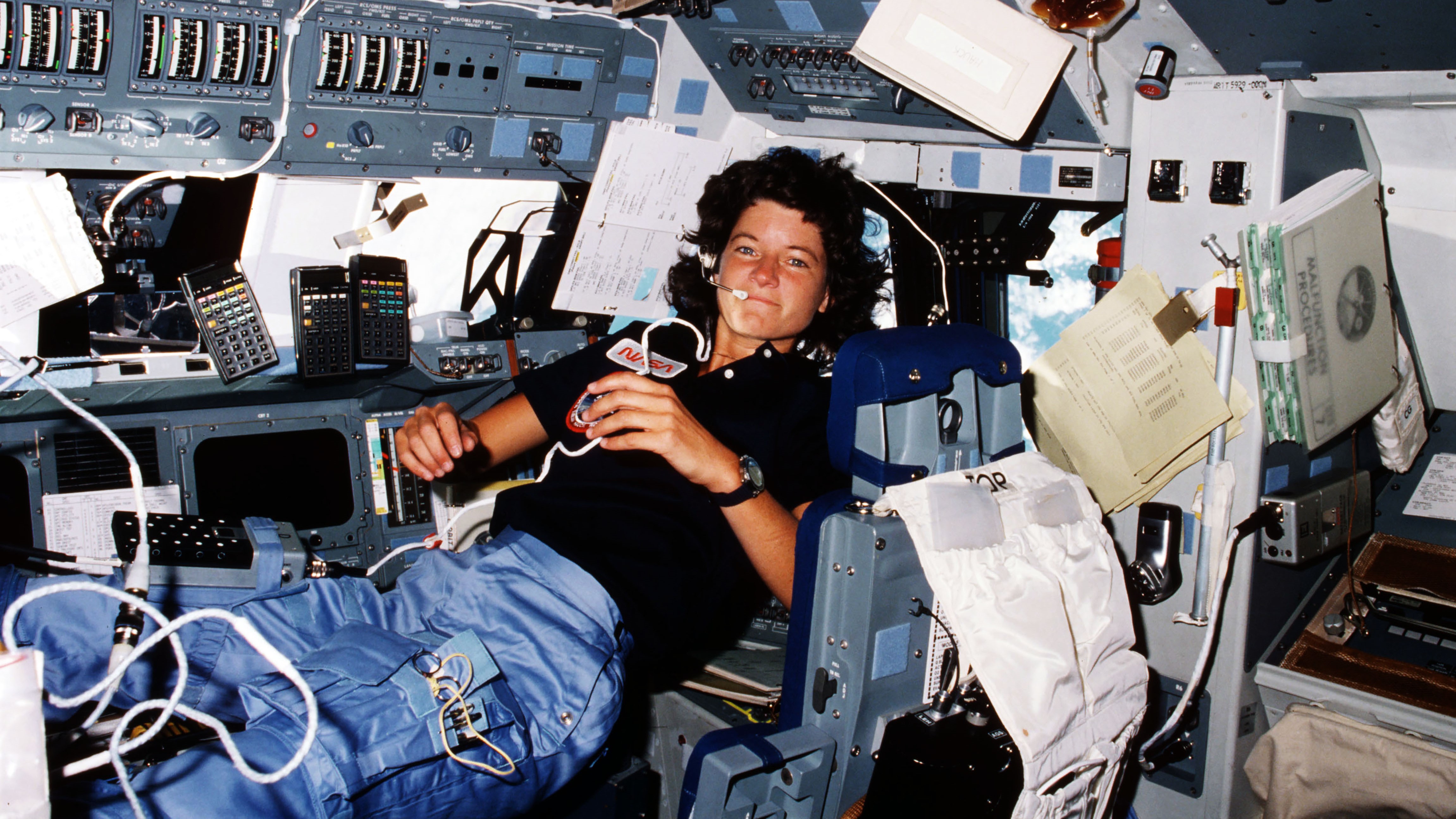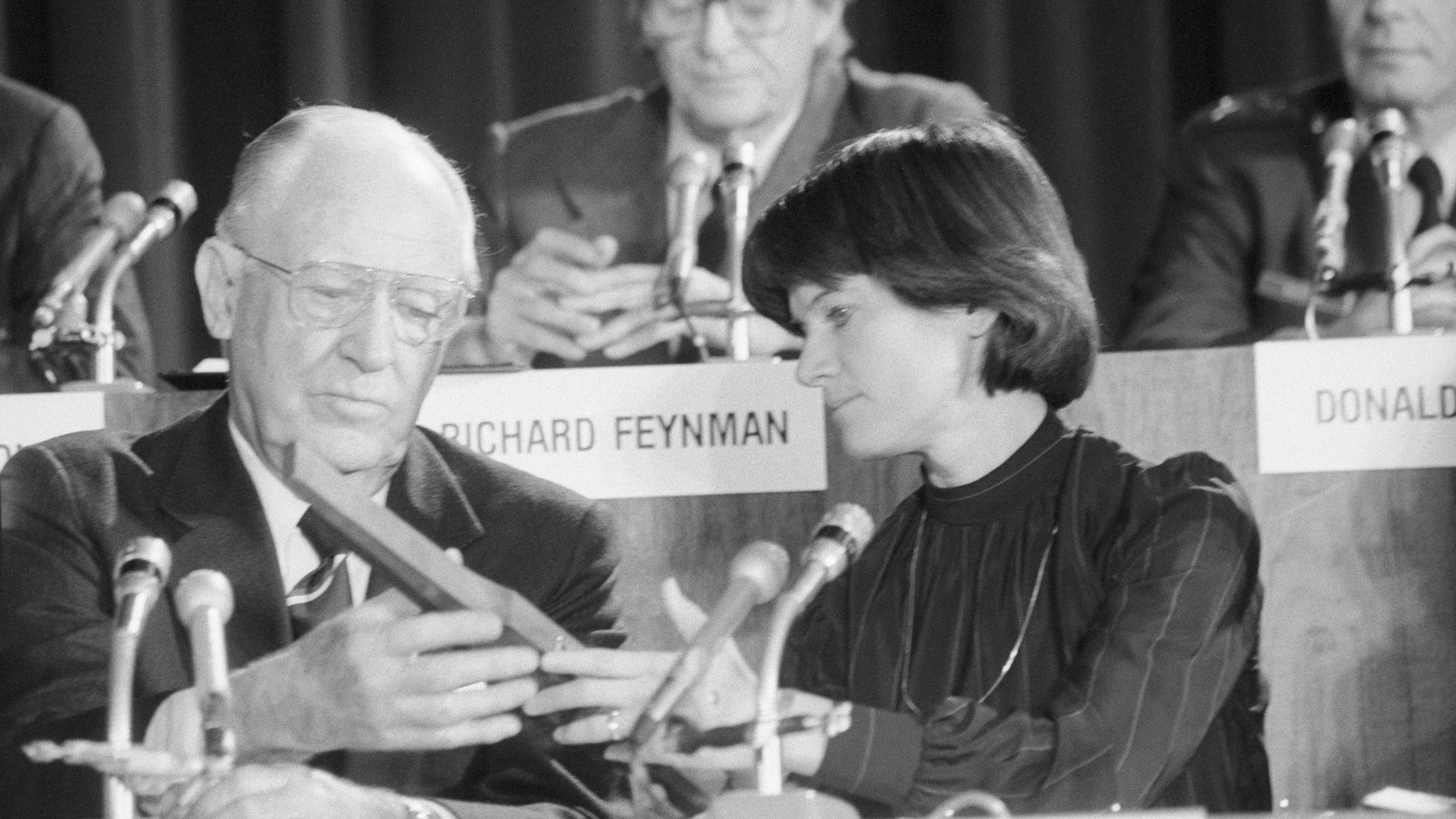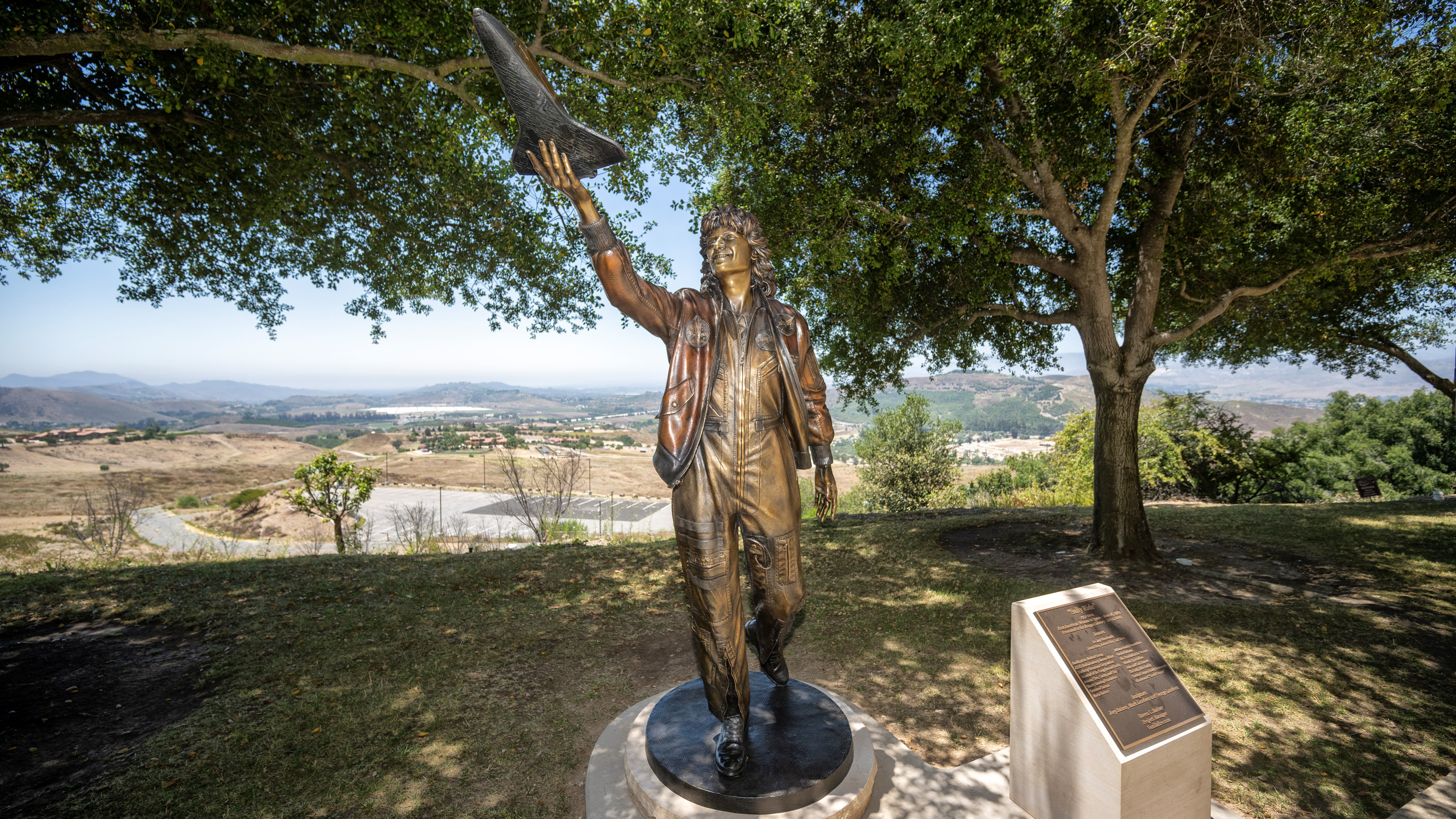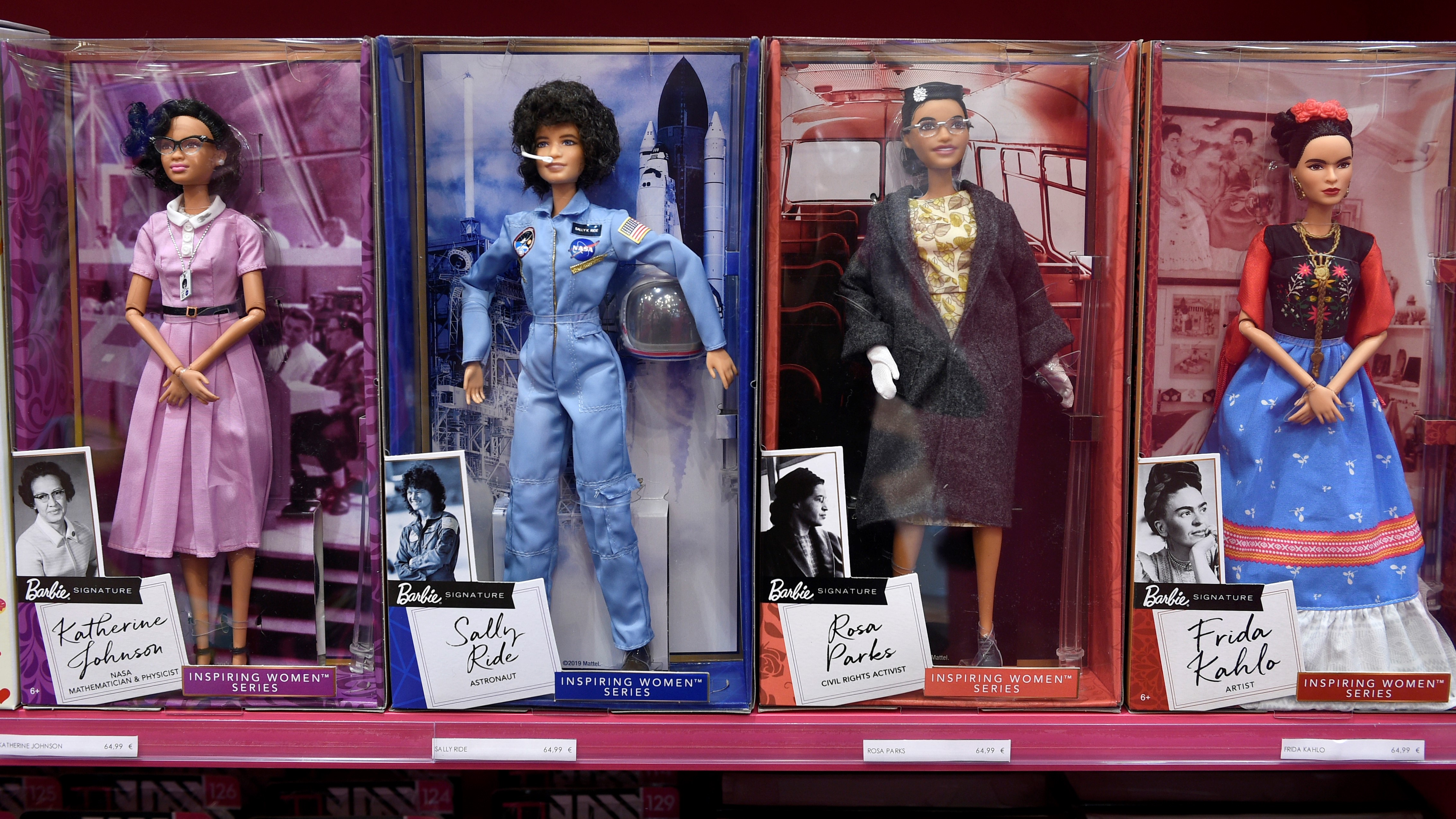Sally Ride: First American woman in space
Sally Ride was a trailblazing astronaut, talented physicist and dedicated educator.

Sally Ride became the first American woman to go into space when she flew on the space shuttle Challenger on June 18, 1983.
She made two shuttle flights and later became a champion for science education and a role model for generations. Ride died of cancer in 2012.
Related: 20 trailblazing women in astronomy and astrophysics
Early life
Born in Encino, Calif., on May 26, 1951, Sally Kristen Ride was the older of two daughters of Dale B. Ride and Carol Joyce (Anderson) Ride. Her father was a professor of political science and her mother was a counselor. While neither had a background in the physical sciences, she credited them with fostering her deep interest in science by encouraging her to explore.
An athletic youngster, Ride attended Westlake High School for Girls, a prep school in Los Angeles, on a partial tennis scholarship. She graduated in 1968. After a brief foray into professional tennis, she returned to California to attend Stanford University. There she received a bachelor of science degree in physics and a bachelor of arts degree in English in 1973. Furthering her studies at Stanford, she obtained a master of science degree in 1975 and a doctorate in physics in 1978, according to a NASA biography of Ride.
After completing her studies at Stanford, Ride applied to the National Aeronautics and Space Administration (NASA). Besting thousands of applicants, Ride was selected as one of NASA's first six female astronauts and began spaceflight training in 1978.
NASA career
Ride started her aeronautics career on the ground, serving as a capsule communicator (CAPCOM) as part of the ground-support crew for the second (November 1981) and third (March 1982) shuttle flights.
Breaking space news, the latest updates on rocket launches, skywatching events and more!
At 32, Ride experienced her first spaceflight as a mission specialist on STS-7, NASA's seventh shuttle mission, aboard the space shuttle Challenger. The mission launched on June 18, 1983, and returned to Earth on June 24. Tasks on the mission included launching communications satellites for Canada and Indonesia. The astronauts also conducted the first successful satellite deployment and retrieval in space using the shuttle's robotic arm. During the flight, Ride became the first woman to operate the shuttle's robotic arm.
Ride's history-making Challenger mission was not her only spaceflight. She also became the first American woman to travel to space a second time when she launched on another Challenger mission, STS-41-G, on Oct. 5, 1984. That mission lasted nine days. On that flight, she used the shuttle's robotic arm to remove ice from the shuttle's exterior and to readjust a radar antenna. Ride was assigned to a third shuttle mission, but her crew's training was cut short by the Challenger disaster in January 1986.
Related images: Sally Ride: First American Woman in Space
Space shuttle investigations
While Ride shaped the future of space aeronautics on her first historic Challenger flight, she continued to influence the space program after her days of space travel were over. Ride served on the accident investigation boards set up in response to the two space shuttle tragedies — Challenger in 1986 and Columbia in 2003. In 2009, she participated in the Augustine committee that helped define NASA's spaceflight goals.
From 1982 to 1987, Ride was married to fellow astronaut Steven Hawley. They had no children.
Post-NASA work
After she left NASA in 1987, her passion for space and science continued. Ride joined Stanford University Center for International Security and Arms Control. She later became a professor of physics at the University of California, San Diego. She served as president of Space.com from 1999 to 2000.
Believing that it was important to encourage students — especially girls — to embrace the study of science, she co-founded Sally Ride Science, a science outreach company, in 2001, with her partner, Tam O'Shaughnessy. One of the company's efforts included adding the MoonKam experiment onto unmanned NASA's Grail moon gravity probes, which allowed students to choose and take their own photos of the moon from lunar orbit.
Ride also wrote five science-related children's books: "To Space and Back"; "Voyager"; "The Third Planet"; "The Mystery of Mars"; and "Exploring Our Solar System."
Ride died on July 23, 2012, at the age of 61 following a 17-month battle with pancreatic cancer.
Legacy
Ride received numerous accolades shortly after her death. The spot on the moon where NASA intentionally crashed Ebb and Flow, the two gravity-mapping probes in the Grail mission, was named after her. Ride played a key role in the project's education and outreach efforts. The U.S. Navy named a research ship after the astronaut. President Barack Obama posthumously awarded her the Presidential Medal of Freedom, the nation's highest civilian honor, in November 2013.
"As the first American woman in space, Sally did not just break the stratospheric glass ceiling, she blasted through it," Obama said. "And when she came back to Earth, she devoted her life to helping girls excel in fields like math, science and engineering."
In 2014, journalist Lynn Sherr released a book about Sally Ride called "Sally Ride: America's First Woman In Space." Sherr had covered Ride's career extensively while working for ABC News, and over the years the two women became friends. Shortly after the book was published, Sherr did an interview with Space.com partner collectSPACE about Ride's career and the importance of the women's movement in her life.
O'Shaughnessy also wrote a children's biography of Ride, called "Sally Ride: A Photobiography of America's Pioneering Woman in Space." In an interview with Space.com, O'Shaughnessy said Sherr did an excellent job in her family-approved biography, but she wanted another to write another one to convey Ride's message to children.
"I started thinking about doing one myself for kids, and trying to do it as appropriately as I could with all the issues of death and being gay and being a gay couple, and Sally being such a hero to so many people," she said in a Space.com interview in 2015.
In late 2017, the U.S. Postal Service announced that Ride's image would appear on a stamp in 2018. The design portrays a painted portrait of Ride as she appeared around the time of her first spaceflight in 1983. Behind her is a space shuttle heading into space. "Sally Ride inspired the nation as a pioneering astronaut, brilliant physicist and dedicated educator," the USPS said in a press release at the time.
On Aug. 29, 2019, Mattel revealed its new Barbie Inspiring Women Series Sally Ride doll styled after the late astronaut as she appears in June 1983 during the STS-7 mission.
On July 4, 2023, a statue of Sally Ride was unveiled on the grounds of the Ronald Reagan Presidential Library and Museum in California. The bronze sculpture captures Ride in mid-step, reaching out to lift a scale model of the space shuttle Challenger into the air. An identical monument was unveiled at the Cradle of Aviation Museum in Garden City, New York in 2022.
"In a space agency filled with trailblazers, Sally Ride was a pioneer of a different sort," David Trulio, president and chief executive officer of the Ronald Reagan Presidential Foundation and Institute, said. "This California native broke the gender barrier on June 18, 1983, when she became the first American woman in space while rocketing on Challenger's STS-7 mission with four male crewmates."
Additional resources
Explore Sally Ride Science and find out more about the hands-on workshops that allow students in grades 3-12 to investigate a wide range of STEAM subjects. Read about the unveiling of the statue of Sally Ride outside the Cradle of Aviation Museum, New York via collectSPACE.
Kim Ann Zimmermann is a contributor to Space.com and sister site Live Science, writing mainly evergreen reference articles that provide background on myriad scientific topics, like the constellations, astronauts, climate, culture and medicine. Her work can also be found at Business News Daily and KM World. She holds a bachelor’s degree in communications from Glassboro State College.
- Elizabeth HowellContributing Writer
- Daisy DobrijevicReference Editor




